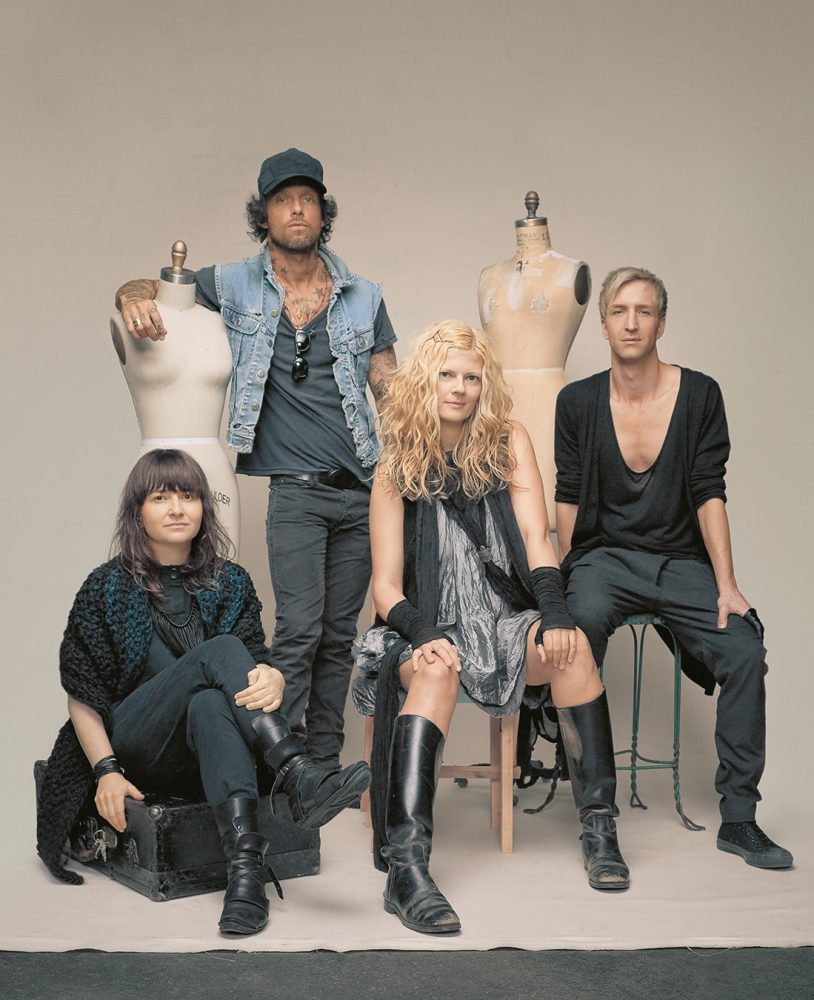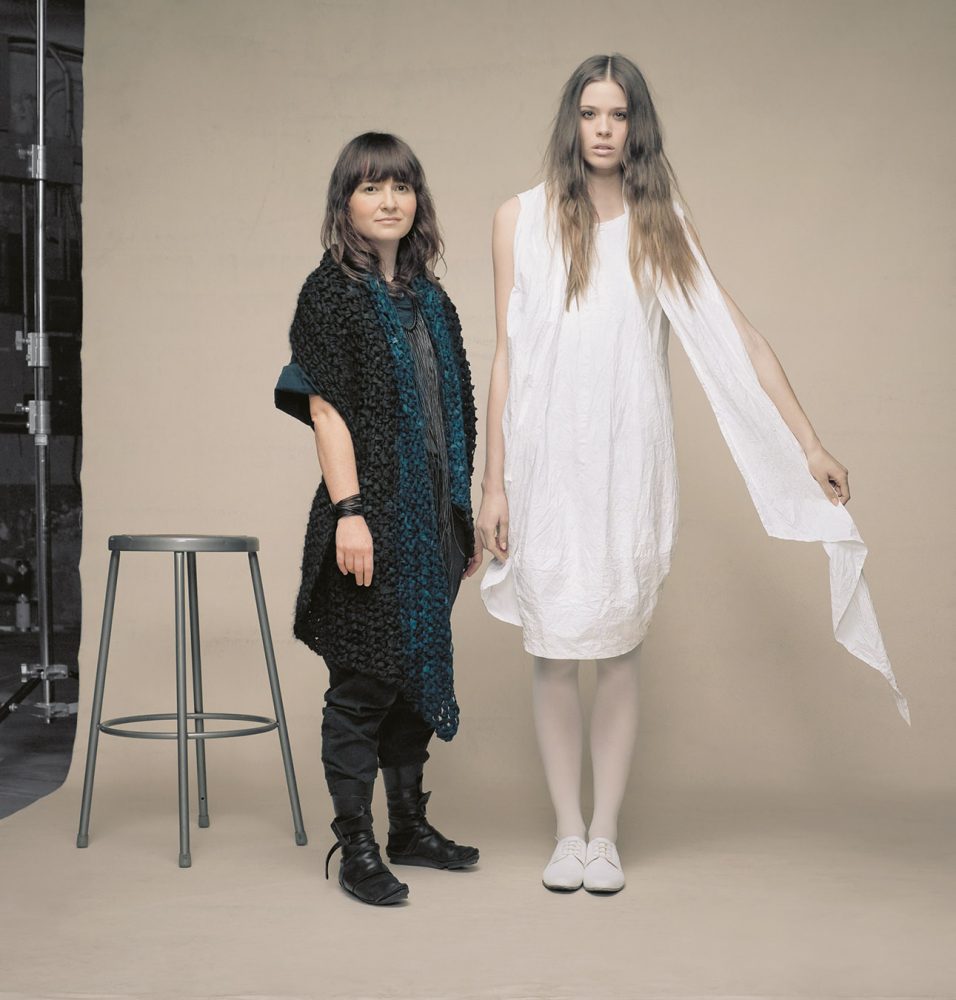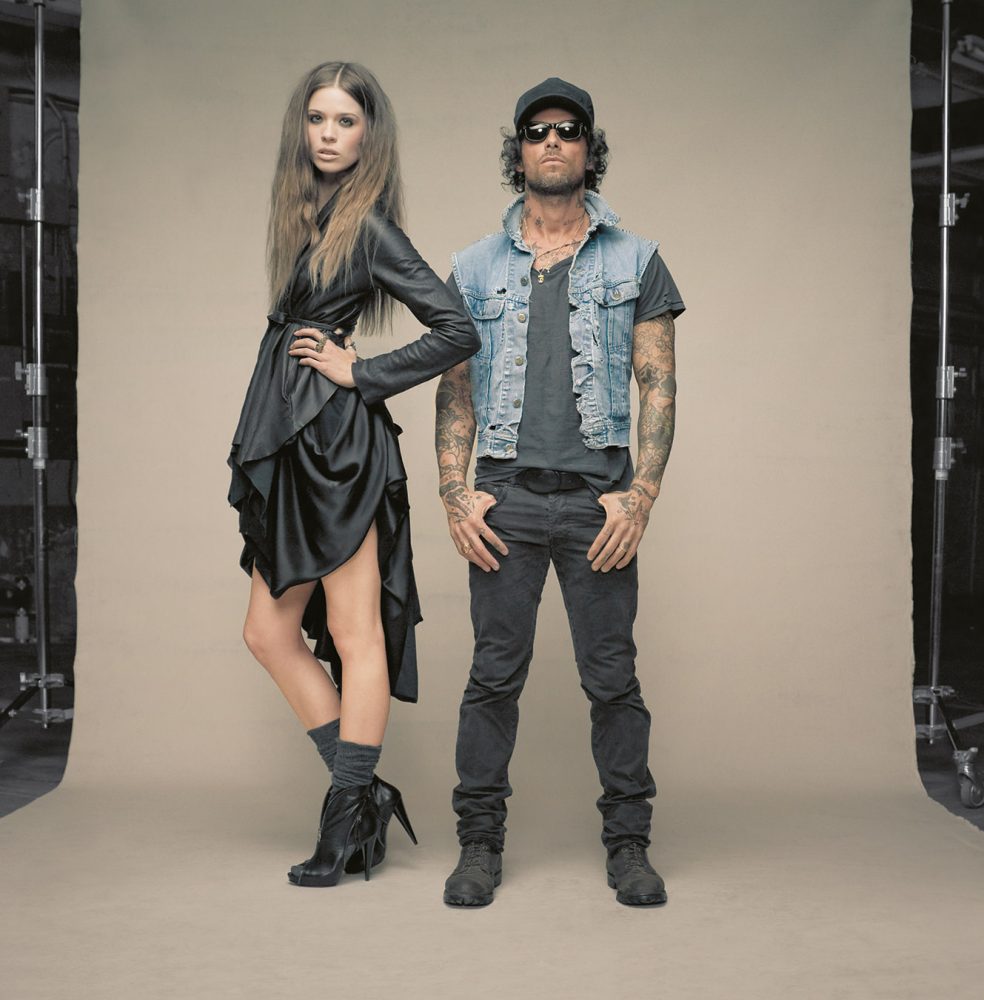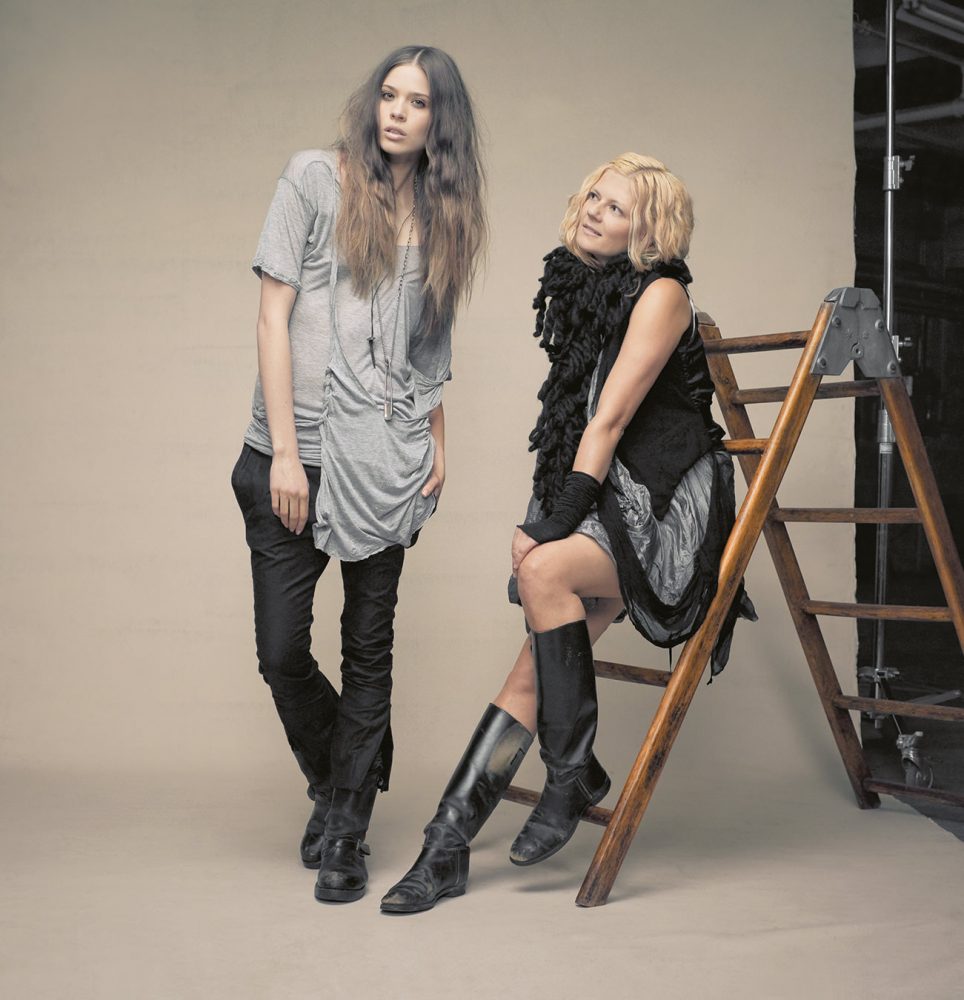In the fashion world, there is constant, prodigious speculation as to who will be the next big thing. But does this apply to a city like Vancouver, where the fashion design industry has been nascent for only the better part of a decade? Sure, our city has seen many talented designers come and go throughout the years, but that is part of the problem: they come and go. Staying relevant is crucial, and challenging enough, no matter what city you are in. So when a designer starts a label independently in Vancouver, the cards are already stacked against them. Perhaps the better question, then, is not who will be the next big thing, but who is living and working here as a fashion designer and actually making a decent go at it?
For many local fashion enthusiasts, coming up with such names is hardly a problem. There are numerous talented fashion designers living and working in Vancouver today, which is a marvel, because 10 years ago, the four designers featured here all agree, not much existed. Heather Martin, Jason Matlo, Hajnalka Mandula, and Raif Adelberg are all at various points in their careers, but each of them, within the last 10 years, has managed to find a way to make life as a fashion designer in Vancouver work for them.
Thanks are due in part to the support of a few key Vancouver retailers, who have long championed local design. They placed locally designed merchandise on the same racks as exclusive and hard-to-find international brands, a tactic Adelberg also used with his own labels, which he sold at the two clothing stores he formerly co-owned, Twenty04 and later on, Richard Kidd.
Support from a Vancouver boutique is something Heather Martin experienced first-hand. While studying fashion design at Vancouver Community College (VCC), she worked as a salesperson at the Block in Gastown. Owner Jennifer McKay invited her to sell the small side projects she had been working on outside of school and work at the shop. She gave these one-of-a-kind items the tag Mono, and the name stuck. The line today has grown tremendously, even internationally, though it is still small. “The line is only 24 pieces, but it’s going really well,” Martin says. “I want to keep it this way. It’s the way it has to be, if I want to continue satisfying my creative urges.”
“You can’t have the fashion show, the fame and fortune all right away. You have to start slow.”
Martin has always been interested in fashion as a fine art. Take for example the collaborative art piece she created with Douglas Coupland—lingerie designed to fit an AK47 gun—or the evenings of performance art she has organized with fellow artists to launch past Mono series. She says, “It’s a bit ironic, really, because ‘mono’ means ‘singular’, yet collaborations have become so integral to what I now do.”
As Martin was graduating from VCC, her superiors admonished her avant-garde tendencies, saying, “You can’t continue doing that. It will never work.” This was before her internship with respected Vancouver designer Yumi Eto, who she credits for “opening my mind to all that you can do with fashion.” In another irony, Martin is now an instructor at VCC too, but the only thing she cautions her students is that “you can’t have the fashion show, the fame and fortune all right away. You have to start slow.”
This is precisely not how things started for Jason Matlo and his self-titled fashion label; still, he has learned the identical lesson. Matlo was plagued with an early onset of hype as “the next big thing.” And while his business may now be soaring, the flight path to actualization has been turbulent. In 1998, and with no formal training, Matlo was selected to represent Canada in Berlin at the Smirnoff International Fashion Awards, a competition searching for the world’s most promising young designers. When he returned to Vancouver, expectations were high. “The next logical step was to start my own line,” he says, “but I didn’t have the money or the skill set. I barely even knew how to thread a sewing machine. People couldn’t understand why I would want to intern with them. Sure I got a lot of press, but I couldn’t get a job.”
Instead, Matlo enrolled at the former Helen Lefeaux School of Fashion Design in Gastown, which eventually lead to a strong relationship with Lefeaux herself. Lefeaux offered him the opportunity to apprentice, one-on-one, under her tutelage, and even teach alongside her. “She is one of the few people in North America with true Parisian couture knowledge,” Matlo says. In spring 2004 Matlo debuted his line, a small collection, warmly received. Producers asked him to compete on a reality TV show called Making it Big, in which the grand prize was an opportunity to sit with Saks Fifth Avenue buyer and Making it Big judge Michael Fink. Matlo and Lefeaux pre-engineered a dress block for the competition and it became the foundation for his characteristic Jason Matlo fit (and it is fitted, women say).
“People put limitations on themselves. There is a lot of good talent in Vancouver. Young talent. But only some people are really taking risks.”
He won the contest. “I was flying like a circus person with no net below,” Matlo reflects. Season after season, his collections received critical acclaim, but major Toronto and New York department store buyers simply wouldn’t buy, not even Fink. Finally, another buyer in New York explained it to him—and he remembers the message clearly: “Space on our floor, on our racks, is real estate. If we put you there, it means we are moving somebody else out. We need our customers to walk up to the rack, instantly recognize your brand, and want it. It’s money.”
This lesson is something all four designers have learned, in one way or another. They all acknowledge that it is difficult to establish your brand internationally. But now, with social media, all that has changed. Heather Martin explains, “Before Interlacing Opposing Thoughts [a Mono series she released early in 2009], I was just a ‘Vancouver designer’. But after sending out a lookbook and a few press releases online, it really opened me up internationally. The online shop allows you to negate the fashion system.”
Raif Adelberg agrees that working out of Vancouver isn’t the problem. “People put limitations on themselves,” he says. “There is a lot of good talent in Vancouver. Young talent. But only some people are really taking risks.” Adelberg has figured out what works for him: leveraging his experimental ready-to-wear collection, Raif, with a line of tees and tanks he calls “Naked”. Though he hesitated in using his name on any clothing label for a long time, Adelberg says “The clothes for me are an extension of my creative self. You have to be connected with what you do, so that when you walk through the door, people get it, before even seeing the product. I’ve always been more of the artist than the business person—my philosophy is ‘I’m just gonna do it.’ ”
Hajnalka Mandula also took a daring risk when she let go of almost all of her stockists to focus on her own boutique in Vancouver. “When I first started my company 10 years ago, I was wholesaling to some of the most beautiful high-end boutiques in the U.S. But it just didn’t make sense for me, because I had no say in how the clothes would be presented. I decided three years ago that retail was the only way for me to go. The whole vision had to be there.” Mandula is conscientious about the image of her brand; one step into her stunning, Old World boutique, and the vision behind her design direction is clear. The retail concept also works well with her production methods. Making only four to five pieces of any one design keeps garments in a constant rotation and shoppers dropping in for unexpected visits.
“In New York, you have the avant-garde art scene; in L.A., the entertainment industry. The culture in Vancouver isn’t the same, but that’s because it’s a young city. Vancouverites say they are liberal, but they are still conservative, ultimately.”
For Jason Matlo, it meant restructuring his business and focussing on his branding. Today, he has reached both ends of the fashion spectrum, with a lower price point diffusion line, Babe, and a couture bridal collection, to complement the existing ready-to-wear line. To further exaggerate the sex appeal of his ready-to-wear, he is creating what he calls “editorial pieces”—items made specifically with magazine stylists in mind. (Look no further than the much-blogged-about sex harnesses from his Fall/Winter 2009 collection.) Canadian celebrities Gabrielle Miller, Tanya Kim, and Erin Karpluk have all worn his dresses for major media appearances in the US. And for Matlo, it has all conspired to be a success. “Forget Canada,” he jokes, “God Bless America! People may ask if Vancouver designers ever reach a ‘sell-out’ point, but my business model has always been, ‘Sell! Sell! Sell!’ ”
U.S. customers are vital for Vancouver designers. They shop entirely differently from Canadians, and Vancouverites in particular. With the Raif line, Adelberg says, “Yeah, I’ve focused a lot outside Vancouver. In New York, you have the avant-garde art scene; in L.A., the entertainment industry. The culture in Vancouver isn’t the same, but that’s because it’s a young city. Vancouverites say they are liberal, but they are still conservative, ultimately.”
Hajnalka Mandula further articulates the differences between Vancouver shoppers and those from New York or Los Angeles. “When I opened the Mandula store, I was curious, living in Vancouver, what would happen about my audience. Actually, I was surprised at how well Vancouverites responded. They do find an attractiveness in what I do—it’s a good audience, but a small one. Sometimes I have to teach people about what they can do with clothing, that it’s so much fun to dress well.” By stark contrast, this is something that her store’s growing tourist demographic understands. “Americans don’t think twice about buying something when they love it. People in Vancouver tend to be in slower pace.” That’s true; the difference is evident moments later when a customer walks into the Abbott Street store, selects a tank-top from the rack, and hands it to Mandula. She asks if he wants to try it on, and he replies, frankly, “No, I just want to buy it.” After a quick conversation, it’s revealed he is visiting from New York.
“I’m so tired of being asked, ‘Why didn’t you move to Toronto?’ Why? Because I love the West Coast lifestyle and because I love that no one else is doing what we’re doing here.”
After he leaves, Mandula laughs and rather decisively says, “That’s why we are opening a store in L.A.” She pauses, then continues, “Though I don’t think we will move there. I like the fast pace for my business, but I don’t know if I would want to live in it.” Jason Matlo shares this sentiment. He says, “I’m so tired of being asked, ‘Why didn’t you move to Toronto?’ Why? Because I love the West Coast lifestyle and because I love that no one else is doing what we’re doing here.” Clearly, working in Vancouver’s small-but-prospering fashion industry has its advantages.
“There are so many people working in the fashion system, but not as much in Vancouver,” says Heather Martin, “which really makes it a great place to start out. It’s all so new here there is no set system. And there is a lot of support within the city, which means we can pretty much do whatever we need to do; whatever we want to do.”
And for this, Vancouver designers are becoming recognized: their local stockists and boutiques are research destinations for the design teams of global retail empires (the New York customer at Mandula was a Ralph Lauren employee). So despite what instructors, demographics, and even common sense may tell an aspiring Vancouver designer—not to push the envelope too far—Heather Martin, Jason Matlo, Raif Adelberg and Hajnalka Mandula, have found quite the opposite to be true. Adelberg’s “I’m just doing it” philosophy must be a good one. As it happens, letting go is better than holding back, even here in Vancouver.
Art Direction: Mark Reynolds.
Fashion Direction: Craig David Long.
Hair: Tania Becker at Moods Hair Salon for Nobasura.
Makeup and Manicure: Andrea Tiller for Nobasura using Mac Cosmetics.
Model: Jenica Ratzlaff for Lizbell Agency.













